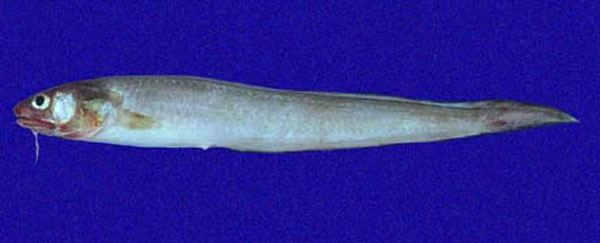| Ophidiidae (Cusk-eels), subfamily: Ophidiinae |
| 29.5 cm SL (male/unsexed) |
|
demersal; marine; depth range 4 - 90 m |
| Eastern Pacific: from the northern part of the Gulf of California to Paita, Peru and along the outer coast of Baja California. |
|
Dorsal soft rays (total): 124-134; Anal soft rays: 105-113; Vertebrae: 70-74. This species is characterized by the following: usual number of vertebrae, precaudal 15 (14-16), caudal 56-58 (55-59), total 71-73 (70-74); fin rays, dorsal 127-133 (124-134), anal 107-112 (105-113), pectoral 21-24 (20-24); pyloric caeca usually 4 (3-5) in a single whorl except the 5th, when present is in a 2nd tier; first gill arch with rudimentary rakers 3 on the upper arm, 4 (rarely 5) developed rakers on the lower limb, 2-9 (usually 4-8) rudimentary rakers anteriorly on the first arch; total rakers 8-16 (usually 11-15) with most variation due to anterior rudiments; dorsal-fin origin between neural spines 4-5 (85 specimens), less often between 3-4 (6 specimens), or 5-6 (8 specimens) (Ref. 91765). |
| Common species (Ref. 34024) found on muddy bottom (Ref. 9329). Oviparous, with oval pelagic eggs floating in a gelatinous mass (Ref. 205). |
|
Least Concern (LC); Date assessed: 23 May 2007 Ref. (130435)
|
| harmless |
Source and more info: www.fishbase.org. For personal, classroom, and other internal use only. Not for publication.

